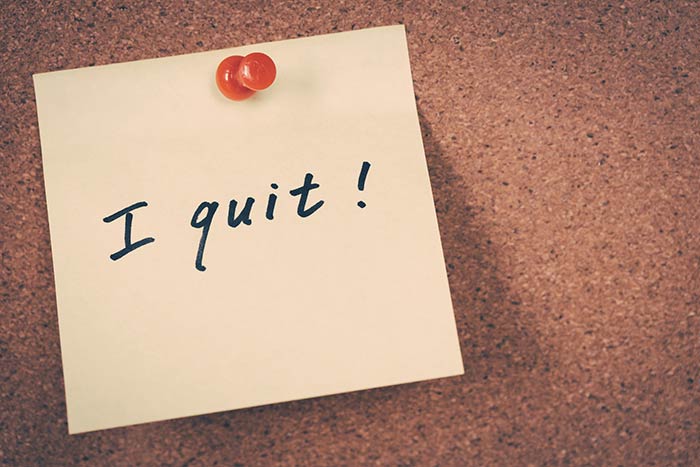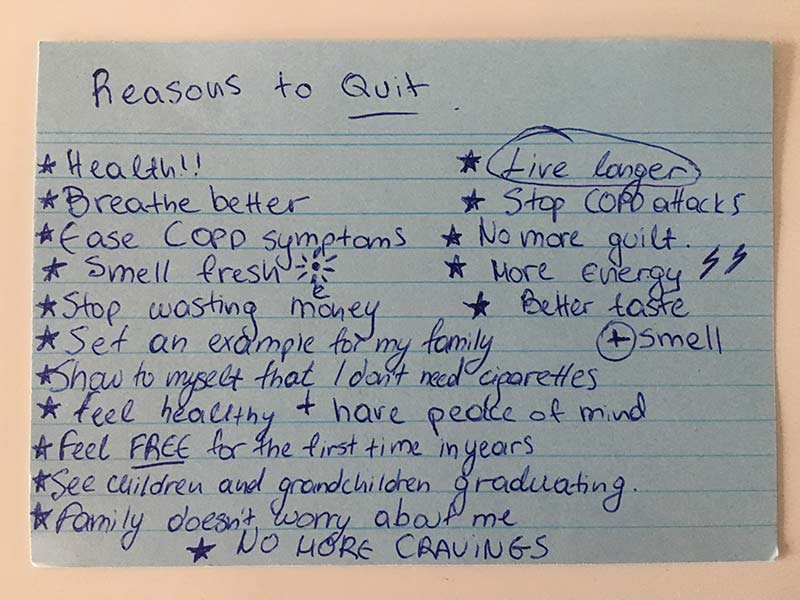Yes, after finishing this article you will have your quit plan.
But that’s not going to be any smoking cessation plan. It’s going to a quit plan that will work for you even if you’ve been smoking for more than 30 years.
But before I get into that, let me ask you this:
What does baking a cake, building a Lego toy and quitting smoking have in common?
You need to follow some kind of plan to get the result you want.
Let me explain.
If you want to bake a specific cake and find it easy what do you do? You follow a recipe so you can use the right ingredients and in the correct sequence.
If you’re with your children or grandchildren trying to build a Lego castle (or an IKEA furniture), you will have to follow the steps in the manual.
And if you want to quit smoking in a way that’s easy and permanent, you need a quit plan to help you reach the finish line.
A recipe, a manual and a quit smoking plan are like a compass that can get you what you want fast and with certainty.
In fact, building a quit plan is the first and most crucial step towards stopping smoking. And it belongs to the first stage of the CBQ method.
The CBQ has four quit smoking stages that break your addiction at a 94% success rate.
On the first stage, Choose to Quit, you create your quitting smoking plan, make a firm decision to change your life so you can feel ready and empowered to become smoke-free.
So in this article, I will show you how to create a successful quit plan in 3 steps based on the CBQ.
But to make the most out of it, I encourage you to write down your quit plan and your ideas. Don’t just do it in your head.
When we write something, our brain absorbs it better. Plus, your notes will be come in handy.
So take a pen and a paper and let’s create your quit smoking plan.
How to Create the Best Quit Plan in 3 Steps
Step 1. Choose Your Quit Date
Choosing your smoke-free day is part of every successful quit plan, and something almost every happy ex-smoker has done.
If you don’t set a quit date, then you might easily postpone your attempt.
Because it’s not enough to say “I’m quitting some day after my Birthday” or “after that stressful event” or “after that holiday”.
No, that’s too vague. You need a definite quit date.
And I understand that the thought of changing your life after a specific date… might be scary.
But the truth is that setting a date as part of your quit plan, helps you get your head around the idea of quitting and prepare psychologically.
And if you do, then you will not get cold feet, when your quit day comes.
So now open your calendar and choose your quit day.
And then select the time you will smoke your last cigarette.
This day can be a Monday morning before work or a Wednesday evening when everyone sleeps and you have a moment to yourself.
There isn’t a wrong time to change your life.
However, I suggest you set your date between 10 days and 2 weeks from now so you can have time to go through the 4 quit smoking stages.
In this exclusive video, I show you everything you need to know about the four stages and how you can use them in your attempt. I will send you the video to the email you provide.
So did you choose your quit day?
If yes, great!
Now note it down on your phone, circle it in your calendar, or note it on a post-it paper and stick it in your fridge.
You have completed the first step of your quit plan.
Step 2. Create Your Quit List
A quit list is the single best thing that will ensure you are ready to go through the withdrawal easily and face any challenge successfully.
What is a “quit list”?
A quit list is a list of all the things you need to do before smoking your last cigarette so you can find quitting easier.
It’s best if you prepare this list now that you are building your quit plan.
People who leave this list to the last minute, don’t have enough time to prepare. That makes them feel anxious and overwhelmed, so they end up not quitting.
But that’s not going to be you.
Because I will give you the full list now so you can prepare.
Read the list once and then start checking off the to-do’s you have completed.
Also, feel free to adjust this list. Add or remove things if you want.
- I have thrown or given away all my ashtrays, lighters and cigarettes on the day before my quit day.
Many smokers save a pack or a couple of cigarettes just in case they need to smoke. This is your addiction trying to trick you. To succeed, cut off every single opportunity to take a puff.
- I have told my loved ones that I am quitting smoking.
Telling your friends and family that you are giving up will help you stick to your decision.
If you feel that is is putting extra pressure on you or that quitting is something you need to do by yourself, that’s absolutely fine.
At least, reach out to one person who can support you.
- If my friends, family or colleagues smoke in front of me, I either remove myself from the situation or keep myself busy with something else.
When you are surrounded by people who smoke, you might feel tempted to smoke.
If you don’t have to put yourself in situations like these, don’t. But if you find yourself with other smokers, here’s how to cope with smoking triggers.
- I am prepared and know how to fight cigarette cravings.
Knowing what to expect from your nicotine urges and how to deal with them will increase your confidence in your attempt as well as your chances of success.
Here I show you how to fight cigarette cravings.
- I know what things to do instead of smoking.
Especially during the first smoke-free days, you will need to keep yourself busy.
Choose an activity to occupy your mind and hands so that you wouldn’t smoke: play with a stress ball, start journaling, take up a new hobby, fake smoke cinnamon sticks or indulge in sugar-free lollipops.
- I am not using any nicotine substitutes like gums, patches or vaping.
There is this myth that nicotine patches, gums and vaping relieve the nicotine withdrawal symptoms.
But that’s not true.
These products make it easier for you to relapse because they keep you addicted to nicotine and to the idea that you need it to feel relaxed and happy.
Listen. Nicotine substitutes do not show you how to stop needing smoking and how to live happily without it.
You see, nobody prevents you from sticking a patch to one hand and lighting up a cigarette with the other. You can’t overcome the addiction to nicotine by taking more nicotine.
- I have written down my reasons to quit smoking and have this paper with me all the time. (see step 3)
- I have chosen how I will reward myself every day I am a non-smoker.
Once you smoke your last cigarette focus on remaining smoke-free one day at a time.
At the end of every day, reward yourself for a job well done. Buy yourself a gift or an experience – no matter how big or small.
- I have a meal plan for after quitting so that I can control my food intake and avoid gaining any weight.
Many smokers gain weight after quitting.
The reason is that they snack a lot or eat more substantial portions. To prevent that, create a meal plan for your smoke-free self and stick to it.
Also, after having a meal stand up immediately and brush your teeth to replace the time that used to be dedicated to smoking. That way you will not gain weight.
- I am following a quit smoking method.
To quit successfully make sure you follow an approach that offers you guidance, certainty, and coping skills to get rid of this addiction.
- The last few days before my quit date, I am making smoking an unpleasant experience.
What will help you prepare for your quit day is taking the enjoyment out of smoking.
For example, only allow yourself to smoke outside in the cold or while standing up or anywhere that’s uncomfortable.
You can copy paste this list on your phone or write it down by hand.
Let’s move on to the last part of your quit plan.
Step 3. Write Your Reasons for Stopping
The last step of your quit smoking plan is writing down your reasons for wanting to stop smoking.
Doing this simple exercise will take you 7 minutes but it can make your quit plan succeed.
See, writing down why you want to be smoke-free has the power t0 strengthen your desire to quit.
And when our desire to quit grows stronger than our desire to smoke… then deciding to quit becomes easier.
I believe all smokers have reasons for quitting with health being on top of the list. At least, it was for me when I was a smoker.
Although we know why we want to quit, we rarely write our reasons down and reflect on them without guilt.
That’s why now it’s the perfect opportunity to write the top 10 reasons why you want your quit plan to work.
Ok, let’s do this exercise together.
Take a pen and a piece of paper and write the top 10 reasons why you want to quit smoking.
Write down anything that comes to your mind – Really, just write it down. It just has to make sense to you.
- Do you want to feel and be healthier, more alive and vibrant?
- Would you like to feel closer to your family, children and loved ones?
- Do you want to stop hearing complaints about your smoking habit?
- Do you want to stop this unattractive smell that stains on your hair and clothes?
- Would you like to breathe better, deeper and easier?
- Do you want to improve your taste buds?
- Do you want to prove people wrong? People who doubted you or made you feel weak?
Keep writing…
- How would it be if you had the freedom to enjoy your drink without a cigarette?
- How much in control would you feel if you were able to say “No, I don’t smoke anymore”?
- You would feel more confident, right?
- How proud would you feel if you inspired others to quit too?
So. do it now! Write how you imagine yourself and your life as a non-smoker. ….
Wrote your reasons? Great!
How to use your reasons to quit smoking to make your quit plan thrive
Before your Quit Date:
Every time you smoke a cigarette, take out the paper with your reasons to quit and read it.
By doing this, you will make smoking unpleasant. Also, focusing on the benefits of quitting smoking will help you train your mind to look forward to your smoke-free life.
On your Quit Date and After:
Keep this list with you at all times so you can feel motivated to follow your quit plan.
And when you go through a challenging time, look at that list and remember why you wanted to quit in the first place.
What Comes After Your Quit Plan
After you create your quit plan is time…to quit.
And there are many methods to do that.
Keep in mind that the quit plan we created together comes from the CBQ method but it will do wonders for you no matter how you stop smoking.
But if you want to kick this addiction easily and naturally using a method that removes your desire for smoking, then do follow the four stages of the CBQ method.
I have created a video for you where I explain what are the 4 stages and how you can use them in your quit plan.
Click here to request access to the exclusive video of the 4 stages.
It’s free – just enter your name and email address so I can send you the video.





